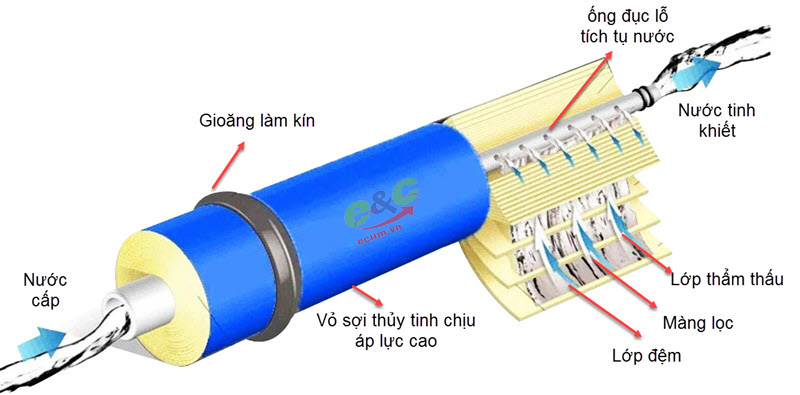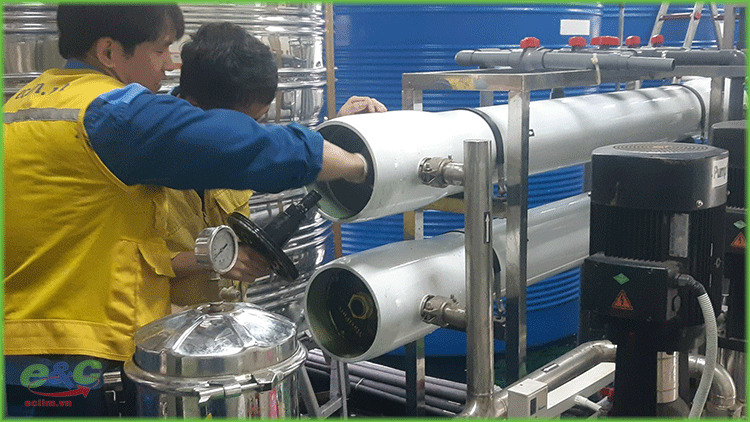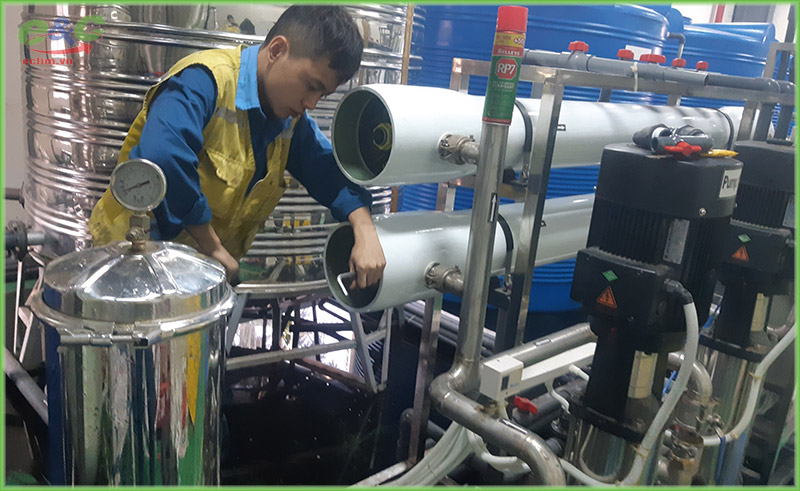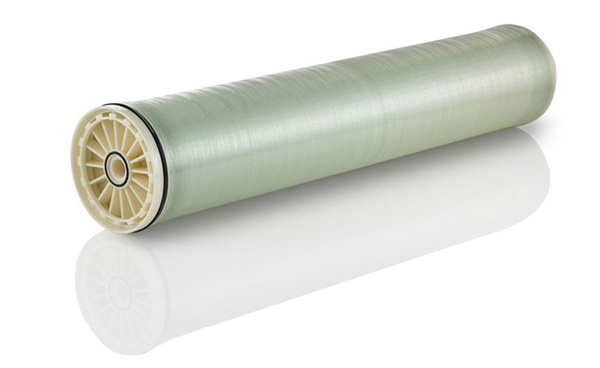Signs that it is time to clean the RO filter membrane
Before being put into the RO membrane, most types of water go through the processes of sedimentation, coarse filtration, fine filtration and microbiological treatment. However, a small amount of impurities remains in the water. Therefore, the RO membrane has the ability to filter out these impurities. Therefore, the output water source meets purity standards.
RO membrane is an osmotic filtration device, using a different mechanism compared to conventional filtration methods. The membrane has a filter slit size of only about 0.0001 micrometer. Therefore, larger impurities will be retained.

Structure of RO filter membrane.
After a period of operation, these impurities will stick to the filter slot. This leads to clogging, higher pressure and reduced filter water flow of the machine. Therefore, it is necessary to take measures to support RO membrane recovery to remove impurities.
Impurities that clog RO membranes are mainly organic (microorganisms) and inorganic (scale). Each group will use a different treatment method.
Chemicals are used to restore RO membranes
There are many different chemicals available on the market today to restore and clean RO membranes. Typical examples include:
- Chemical A101: This chemical is often used to clean RO membranes clogged by heavy metals and inorganic substances.
- Chemical mA102: Can be used with membranes contaminated with microorganisms or organic matter.
- Frozen soda: used for industrial RO membranes.

Clean the RO filter core.
RO filter cleaning process
- Step 1: Remove microorganisms in the RO filter membrane with alkaline but not alkaline cleaning chemicals.
- Step 2: Use acidic but non-acid chemicals to remove heavy metal ions in water.
Note when doing this
- Check chemical levels regularly during cleaning. That is the only way to determine the effectiveness of RO membrane cleaning.
- Ensure best cleaning performance by following manufacturer's regulations and specifications, including temperature, pH, differential pressure and flow.
- To descale first, do not use acidic detergents. Because the RO membrane has microorganisms that will react with the microorganisms and create a hard film. As a result, RO membrane fouling becomes worse.
- After chemicals restore the RO membrane at each stage, rinse the membrane with clean water without chlorine chemicals.
- To avoid direct contact with chemicals, wear rubber gloves. Make sure that chemicals are not placed in flammable areas or in contact with other explosive chemicals.
- Avoid cleaning the RO filter in a stove or cold storage because it will not ensure the right temperature when cleaning.

Cleaning the RO filter core properly helps extend the effective life of the entire RO water supply system .
When do you need to replace the RO filter?
However, reconditioning the RO filter can help improve water quality and equipment durability. However, this is not a perfect solution to solve all RO membrane problems in the long run.
After a period of use, the operating capacity of the filter will decrease. Therefore, hygiene is no longer important. To ensure high purity output water, users should use a new RO filter membrane.

Be sure to replace the RO filter core when due to help maintain better water filtration performance of the system.
Depending on the characteristics of the water and the front filter levels in the machine, the RO core usually has a lifespan of 12 to 24 months.
Water sources that contain many impurities and have fewer filtration levels cause the RO membrane to be under higher pressure. Therefore, the lifespan of the membrane will be reduced. Therefore, the filter replacement time can be only twelve to eighteen months.
On the contrary, the time to replace the RO membrane will be longer, about 24 months, if the water source has few impurities and has many levels of filtration in front of the RO membrane.


